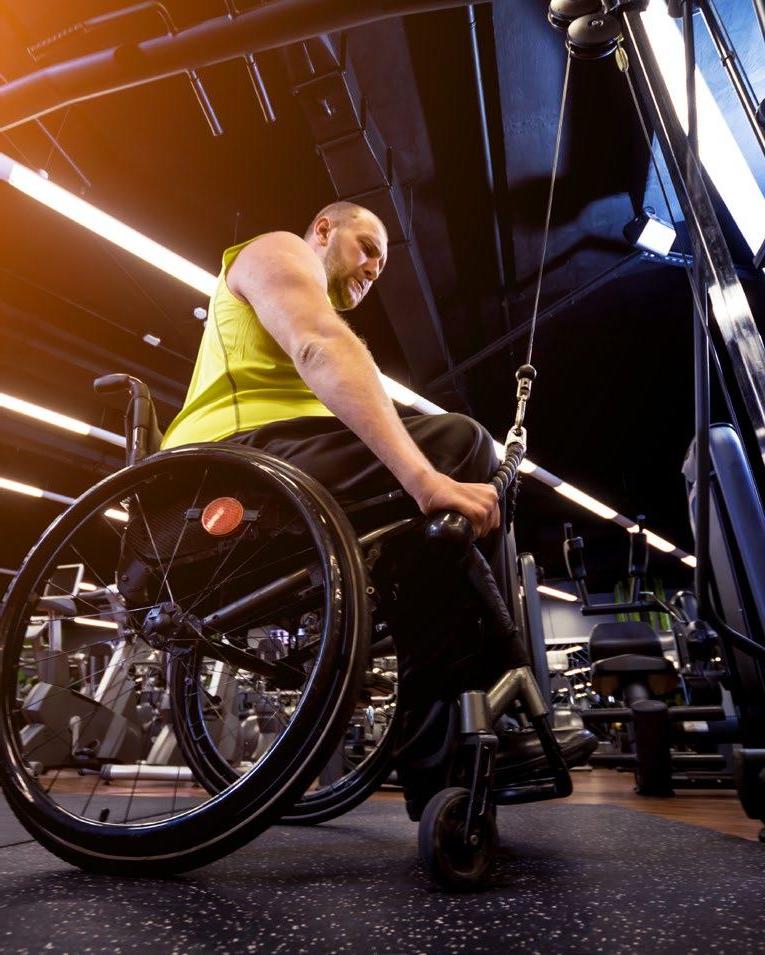
4 minute read
Equity Assessments for Canadian Gyms and Fitness Spaces
A proactive way to address potential human rights concerns and create equitable environments
By Adam Benn
These events have not only led to greater awareness of racism, and other forms of discrimination, but have also incited action. Among businesses and organizations, these actions include developing and strengthening current equity-related policies and the addition of equity, diversity, and inclusion training.
From “human rights” to “equity, diversity, and inclusion”.
The Canadian fitness industry has felt the impacts of this global movement. Currently, businesses in the Canadian fitness industry have obligations under either provincial or federal human rights legislation which outlines protections for protected groups. This legislation is meant to ensure that individuals and groups have equal access – and may involve taking actions like:
- Installing accessible push buttons
- Creating accessible signage
- Installing ramps
- Giving time to staff for prayer, or religious holidays
- Ensuring that all genders have access to washrooms
Gyms and fitness spaces must comply with federal/provincial human rights legislation. However, adopting a “human rights” approach may not be proactive enough to address the systemic barriers that equity-seeking groups experience. A human rights approach is a legal based approach – centred around complaints or issues. A human rights approach protects groups and individuals from discrimination, but may not always provide a clear, consistent, and appropriate set of guidelines to create equitable environments.
One key tool that gyms and other fitness businesses can use to create a more inclusive environment is through an equity assessment or equity audit. The word equity most often refers to “the ongoing intentional and systemic approach to remove historic and current barriers for equity-seeking groups”. Special equity programs, like federal employment equity programs, go beyond treating persons “the same way”.
An equity assessment involves collecting and analyzing information with the goal of identifying potential barriers for equity-seeking groups. An equity assessment is a proactive way to address potential human rights concerns, rather than waiting to respond to issues of discrimination when they arise.
Asking “who is in and who is out”?
A place for gyms and fitness businesses to start is by taking a critical look at their business delivery model, reflecting on the following questions:
- Whose needs are met by this delivery model?
- What are the identities?
- Whose voices have been considered? Who is missing?
- Are there any unintentional impacts with this service delivery model?
For example, a gym might find that their current class schedules do not meet the needs of mothers/parents; or the physical space creates challenges for individuals who have visual impairments. These questions are an important foundation for understanding what barriers your clients or potential clients may be experiencing. Reducing or eliminating these barriers can lead to increased client base and/or improved client experience, especially for equity seeking groups.
Some other important considerations:
1. Ensure you are meeting relevant Federal and Provincial Human Rights Legislation
Gyms and fitness spaces in Canada are required to adhere to Federal and/ or Provincial Human Rights legislation. For example, in Ontario, equity policies might be guided by the Ontario Human Rights Code and/or the Occupational Health and Safety Act. While building an inclusive environment is a great goal, starting with the legislation ensures that the policy, at a minimum, reflects your legislative obligations. Ensure that you are aware and understand what these obligations are.
2.Who is missing – in YOUR facility?
Provincial and Federal human right legislation lays out protections for protected groups. Federal Canadian law recognizes four designated groups: “women, people with disabilities, Aboriginal peoples, and visible minorities”. Some organizations and institutions include LGBT2SQ groups as well. Generally, these groups experience barriers when accessing housing, employment and other services. However, depending on where you are located in the country, there may be other groups that face barriers. Use your assessment to also identify other groups that might be the groups you are targeting.
3.Engage your base
The idea of what concepts like equity look like can change depending on who is in the room. Engaging staff and clients in the assessment process encourages input and participation, creates buy-in and results in an equity assessment that reflects the uniqueness of your environment.
Inclusive environments = win for all
Many gyms are operating with limited staff and resources. However, completing an equity-assessment does not have to be a laborious task. It is an opportunity to better understand the ways we can tailor our services to meet the unique needs of the clients we serve. As mentioned, this can lead to a better client experience, but can also lead to our own personal growth in our own lives as we start to understand how the systems that we operate in can work for us, or against us, depending on who we are.
Working with an equity assessment also requires an awareness around one’s own identities, more specifically, what privilege identities you may hold. This work is lifelong, but the awareness developed through engaging in assessment processes can be an important first step.
Adam Benn, M.A, M.Ed., is an experienced facilitator, educator, and certified personal trainer with over ten years of experience in personal training, education, and community healthcare. Adam has wide and ranging experience working with diverse populations with unique needs and supporting individuals and groups to create inclusive environments.







